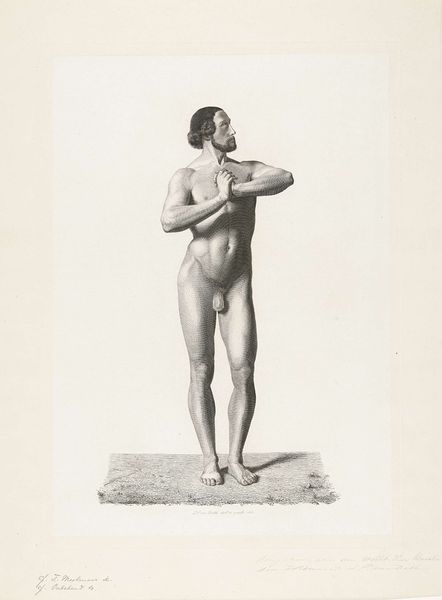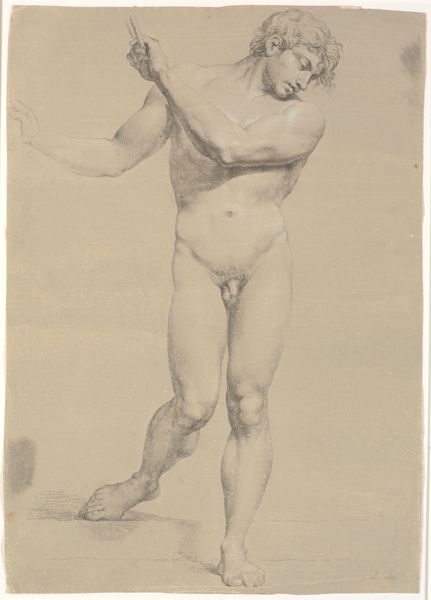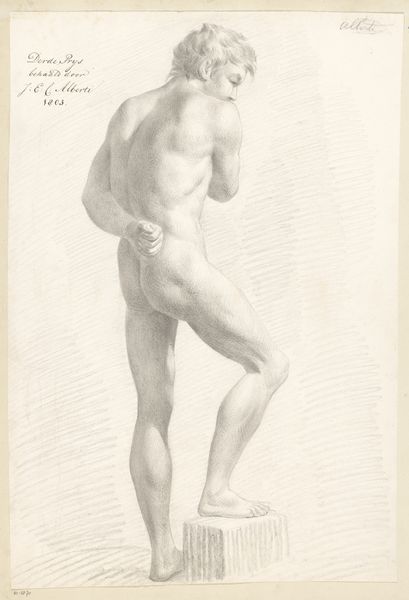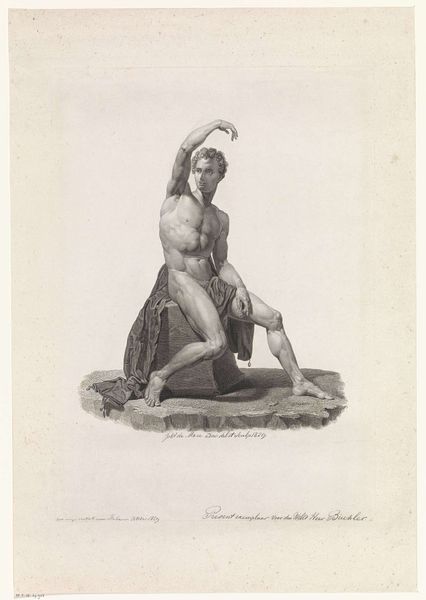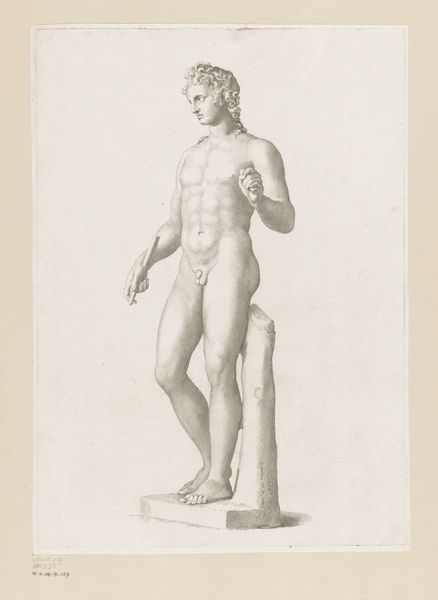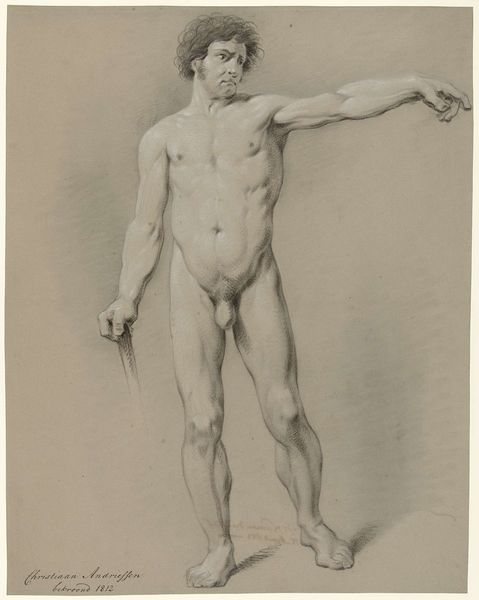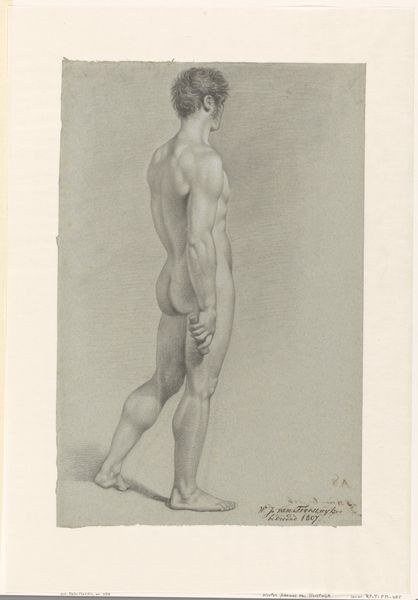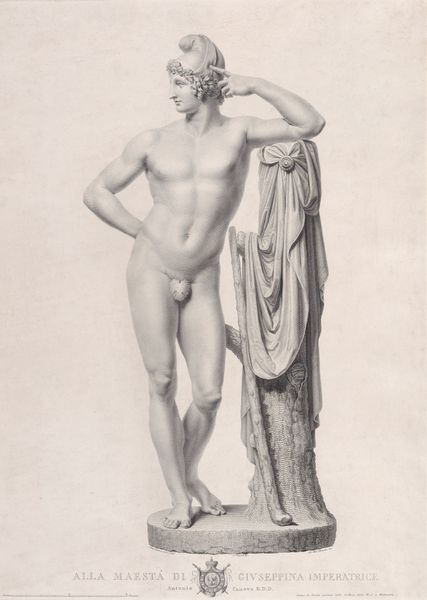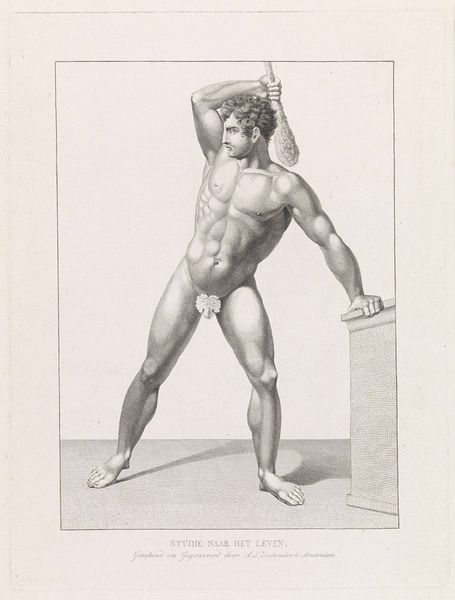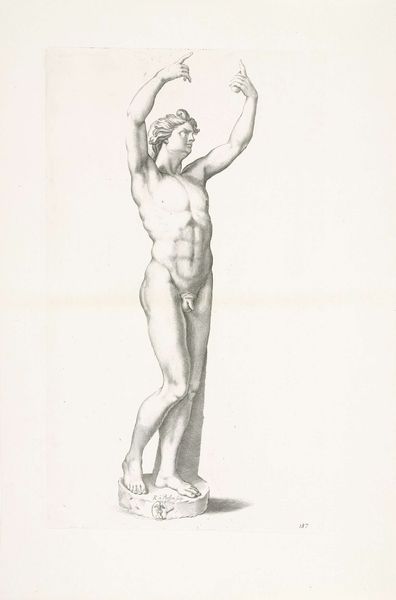
drawing, pencil
#
portrait
#
drawing
#
charcoal drawing
#
pencil drawing
#
pencil
#
portrait drawing
#
academic-art
#
realism
Dimensions: height 443 mm, width 317 mm
Copyright: Rijks Museum: Open Domain
Curator: What strikes you first about this standing nude male figure rendered in pencil? The work, aptly titled "Standing Naked Man" by Frans Molenaar, dates to 1843. Editor: The stark vulnerability. The light falls upon his muscular form, yet his stance seems hesitant, almost imploring. There’s a tension there, a discomfort perhaps. I wonder what that signals about the male gaze during the 19th century? Curator: Molenaar, though less known now, situated himself within the currents of academic art and realism. Consider the social and artistic institutions of the time, which prized idealized portrayals of the human form but also insisted on "objective" observation. These institutions exerted powerful pressures. Editor: Absolutely. It reflects a historical negotiation – the male nude as both an object of aesthetic appreciation and an embodiment of social ideals, which, of course, were inherently gendered. It makes you think about power, display, and self-perception. Is this form empowered, or is it passively presented for scrutiny? Curator: Looking at Molenaar's approach through the lens of history, we must recognize the impact of classical ideals revived during the Renaissance. Artistic academies rigidly promoted rigorous anatomical study; their promotion produced artists like Molenaar, steeped in this aesthetic tradition, so how might we see it? Editor: This highlights how the artwork acts as a social document, revealing underlying anxieties and the policing of the human body within prevailing social structures. Can we overlook this? His pose is both protective, his hands held firmly in front of his body, while the classical allusions romanticize. Is this body an idol, a thing? Curator: These institutions dictated what art was displayed where, influencing how a work, like this pencil drawing, circulated, and who encountered it. Molenaar's art engaged in dialogue with social norms, so it stands in testimony. Editor: Examining this figure provokes questions of spectatorship and invites us to consider the nuanced layers of meaning embedded in what might initially seem like a straightforward depiction of a nude man. Curator: I will leave it for the people to decide now what is seen in this work today. Editor: A truly worthwhile image for considering the cultural encoding of our present.
Comments
No comments
Be the first to comment and join the conversation on the ultimate creative platform.
